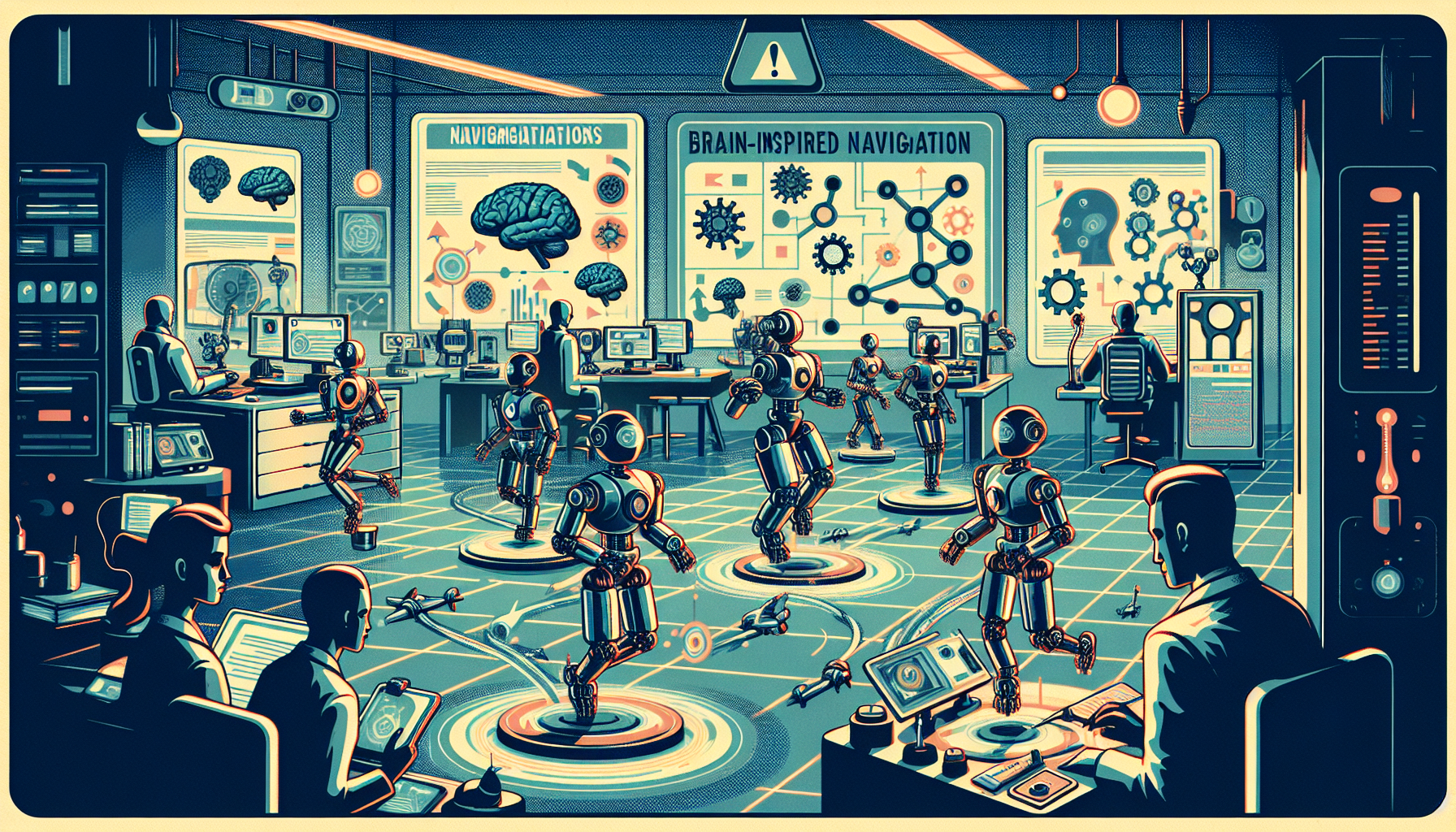In the exciting world of robotics, a groundbreaking development is on the rise. Researchers are looking at the intricate navigation skills of human and animal brains to reshape how robots move and interact with their surroundings. This fresh approach, called brain-inspired navigation, is helping robots become more efficient, accurate, and adaptable than ever before.
The Key Idea: Spatial Cognition
At the core of brain-inspired navigation is a concept known as spatial cognition. This is a vital skill that allows both humans and animals to find their way through environments. It deals with how the brain organizes and understands space. For robots, this process is mirrored through complex network models that pull in information from various sources like sight, sound, and touch. By piecing together this data, robots create a “cognitive map” of their surroundings, much like how the human hippocampus forms neural maps.
Mastering Tough Environments
One major strength of brain-inspired navigation is its ability to handle challenging and ever-changing environments. Unlike older systems that depend on pre-mapped paths, these advanced systems are always learning and evolving. This quality is vital for scenarios like disaster zones or distant planets where traditional mapping is often not an option. By continuously tweaking their navigation methods, these machines maintain effectiveness in situations fraught with unpredictability.
Efficiency in Energy and Computation
Another benefit of these new systems is their impressive energy and computational efficiency. By homing in on critical data and using smart neural models, they cut down on how often robots need recharging or fixing. This capability is especially useful in environments with limited resources, allowing robots to take on more complex tasks over longer periods without needing a break.
Next-Level Place Recognition
Researchers at Queensland University of Technology (QUT) are spearheading innovations in this area with a new place recognition algorithm that uses Spiking Neural Networks (SNNs). These networks mimic the way the human brain processes information through quick, distinct signals, similar to neuron communication. This research, backed by Intel, has achieved a 41% boost in recognizing places accurately, letting systems adjust to changing appearances across different seasons and weather conditions.
Vast Applications
The potential uses for brain-inspired navigation technology are vast and varied. For instance, self-driving cars with these systems can navigate more smoothly, adapting swiftly to sudden changes in road conditions. Drones managing deliveries can find more efficient flight routes, avoiding obstacles and cutting down delivery times. Moreover, these advancements are invaluable in search and rescue missions, space explorations, and many other critical activities.
Overcoming Challenges and Looking Ahead
Despite the promising outlook of brain-inspired navigation, there are hurdles to clear. Blending biological ideas with mechanical systems is complex, needing teamwork from fields like neuroscience, cognitive science, robotics, and artificial intelligence. Researchers need to ensure these systems are adaptable and scalable for a wide range of robotic platforms and uses. As we continue to delve into the brain’s navigation capabilities, the future of robotics may increasingly align with neuroscience principles.
The Road Ahead
Brain-inspired navigation is a pivotal advancement in robotics, combining elements of biology with mechanics and theory with practice. As this technology grows, it promises to expand the possibilities for robotics, making machines more integral to daily life and work. The intersection of neuroscience and robotics not only enhances our grasp of the human brain but also sets the stage for a new era of intelligent robots able to carry out essential tasks with remarkable efficiency and accuracy.

Leave a Reply